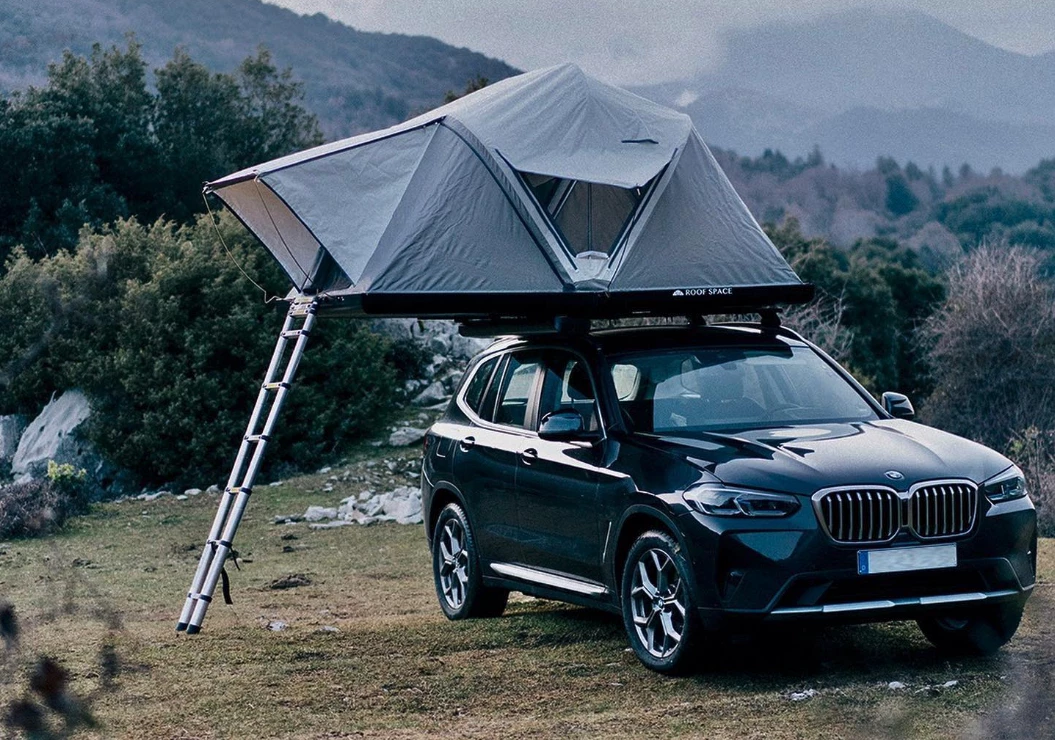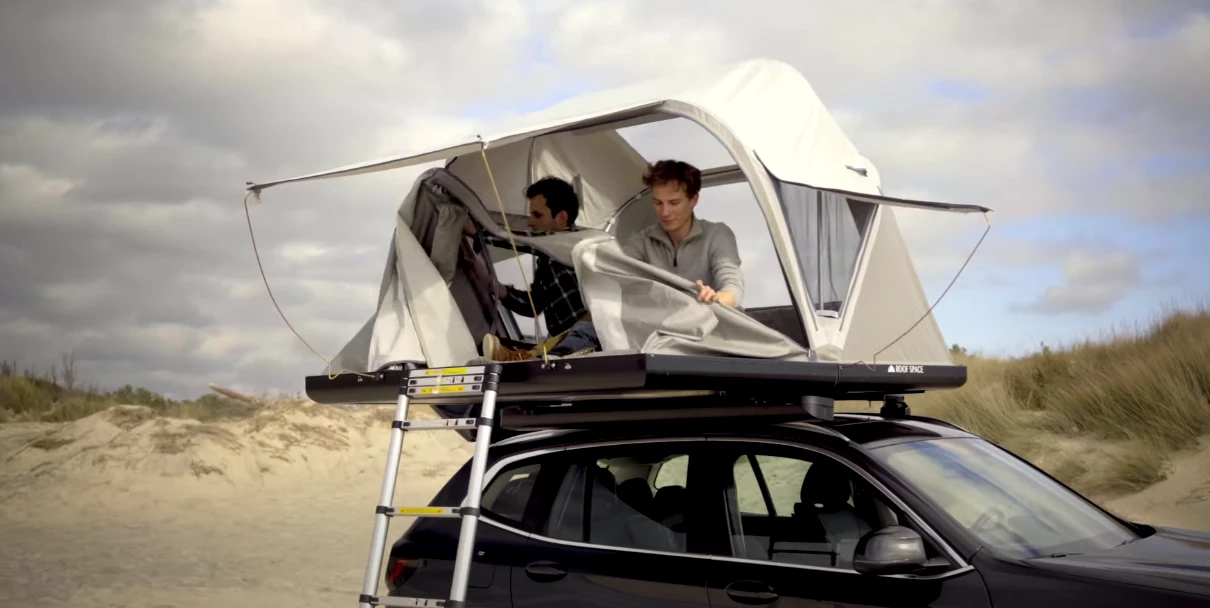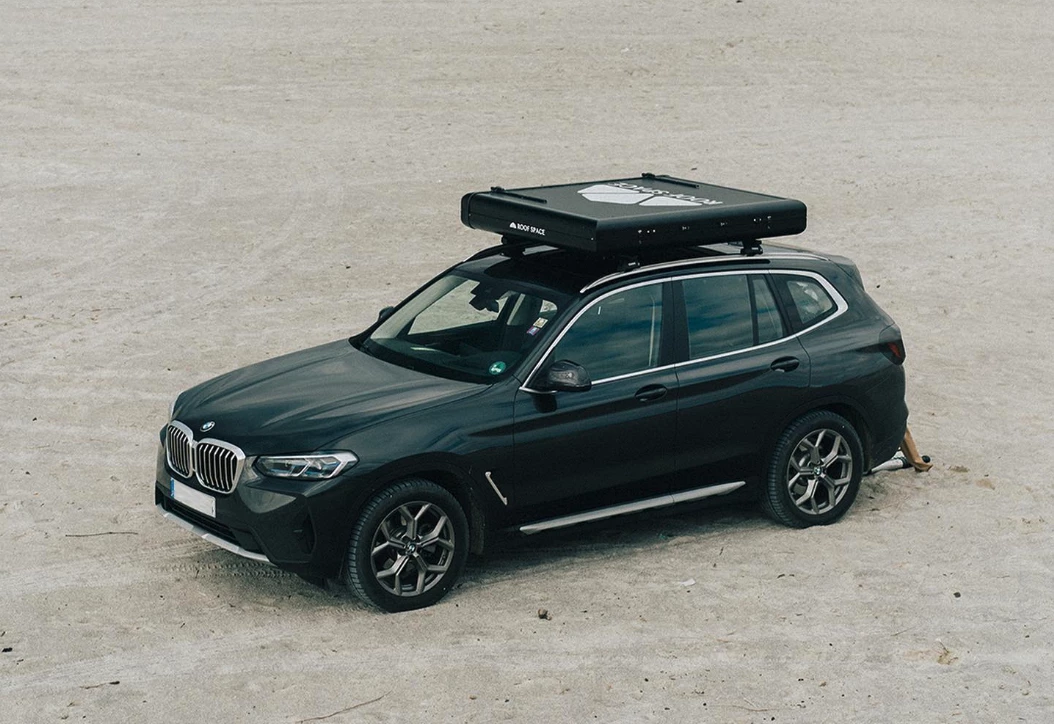Fold-out hard-shell rooftop tents like the iKamper Skycamp have closed the traditional gap between aerodynamic, fast-pitching hard-shell roof tents and roomy, family-sized soft-shell RTTs. These hybrids set up nearly as quickly and easily as traditional two-person hard-shells but pack space for three to four people – the best of both worlds. German startup Roof Space believes there's still some work to be done in fine-tuning and improving the fold-out hardshell, though. Its debut One tent features clean, 60-second clamshell operation, holds three people, and even zips open into an airy balcony for taking in sun and scenery.
With the iKamper Skycamp and others around, we can't really get behind Roof Space's description of the "first folding hardshell tent," but its tent does rely on a folding mechanism distinct from the other hardshell folders we've seen. Instead of packing its fold-out floor extension inside the hard-shell case, below the tilt-up lid, Roof Space has made the lid itself the floor extension. The hard case lid folds a full 180 degrees to become the part of the tent floor that extends off the vehicle. It's exactly like the unfolding-sandwich action of a soft-sided RTT, albeit without the bothersome zippered soft rain cover that makes soft-shells more difficult and time-consuming to set up and break down.

While Roof Space One and iKamper Skycamp setup processes are slightly different, both companies advertise times of 60 seconds, so Roof Space One setup is not necessarily faster or easier, just different. Roof Space's unique design does bring some advantages, though. Since it doesn't turn its hard lid into a dark, windowless lean-to-like wall, Roof Space is able to brighten up the One interior by having windows on all four sides and a skylight above. This might prove a disadvantage on a bright early morning at a campsite that lacks shade, but it will prove a nice advantage when falling asleep to the stars at night, enjoying the scenery during the day, and cranking up the cross ventilation in warmer weather.
Perhaps the most intriguing advantage of Roof Space's design is what it calls "Panorama Mode." A zipper that traces the edge of the front hoop pole allows users to quickly drop the front section of fabric off the tent, creating an open-air deck with awning. This essentially turns the tent into a breezy rooftop cabana and lookout point, great for spending time in during the day without things getting stuffy. Other RTTs offer large entry doors that campers could keep open completely, but Roof Space has taken the concept a step beyond.

Roof Space bills its 53 x 81-in (135 x 205-cm) tent floor as large enough for up to three people. The tent measures just over 51 inches (130 cm) at its peak. The case uses aluminum-honeycomb top and bottom panels held together by 6063 aluminum frame rails, leading to a total tent weight of 148 lb (67 kg). It sits at an impressively compact 8.3 inches (21 cm) high when closed and ready to ride to camp – not the sleekest we're aware of (less than 5 inches!) but on the sleek side of the market, to be sure.
Since we talked about it throughout, the newly updated iKamper Skycamp 3.0 measures 13.5 inches (34.3 cm) high when closed and weighs 165 lb (75 kg). It offers a larger four-person (two adults/two children) sleeping area measuring 83 x 77 inches (211 x 196 cm).

Roof Space is winding down an Indiegogo campaign now, and while the cheapest early birds have already sold out, the One is still advertised at pledge levels starting at €2,800 (approx. US$2,950), 20 percent off the planned €3,500 (US$3,675) retail. Though the company has raised over $78,000, it'll fall short of its $105,000 goal if it doesn't pull in a few more pledges by the end of its campaign in six days. It hopes to begin deliveries this summer (Northern Hemisphere).
The pitch below includes English subtitles and does a nice job taking a closer look at the Roof Space One design, materials and benefits.
Source: Roof Space









